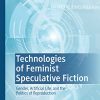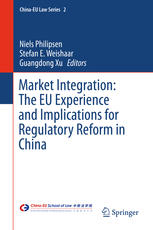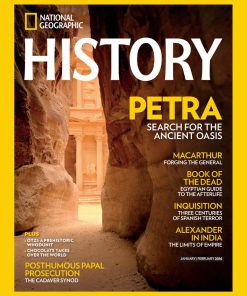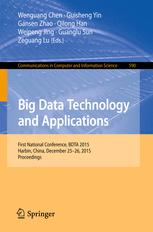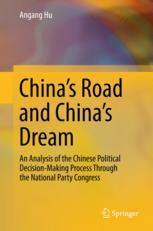Communication Campaigns and National Integration in China’s Market Economy Era Reviving the National Soul 1st Edition by Yanru Chen ISBN 9812877339 9789812877338
$50.00 Original price was: $50.00.$25.00Current price is: $25.00.
Communication Campaigns and National Integration in China’s Market Economy Era Reviving the National Soul 1st Edition by Yanru Chen – Ebook PDF Instant Download/Delivery: 9812877339, 9789812877338
Full download Communication Campaigns and National Integration in China’s Market Economy Era Reviving the National Soul 1st Edition after payment
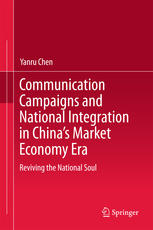
Product details:
ISBN 10: 9812877339
ISBN 13: 9789812877338
Author: Yanru Chen
This book adopts the method of grounded theory in studying national communication campaigns in China, referred to as propaganda campaigns in the Chinese linguistic context. The study provides an exploratory and descriptive analysis of the ways in which the media in China fulfilled their function of building a Socialist spiritual civilisation and maintaining national integration during state propaganda campaigns. Explanations for the success and limitations of the campaigns are clearly expressed and combined with cautious statements on the limited role of the media in the process of national integration. The three major communication campaigns detailed in this book offer revelations regarding how to maintain mass morale and revive the national spirit at a time when economic pursuits and aspirations seem to be the top priority for individuals and institutions. A chief premise underpinning this study is that economic growth is not to be equated with social progress or human development, the latter encompassing a far more profound spiritual dimension, which takes far more delicate efforts to accomplish.
Communication Campaigns and National Integration in China’s Market Economy Era Reviving the National Soul 1st Table of contents:
1 Introduction
1.1 Introduction
1.2 In Search of China’s National Soul: Is the Nation Falling Apart?
1.2.1 Ideological Schism—Is There an Identity Crisis?
1.2.1.1 Defining Patriotism
1.2.1.2 Defining the Nation
1.2.2 Party-State-Nation: Consequences of Structural Differentiation
1.2.3 Historical Discontinuity—A Spiritual Vacuum
1.2.4 Substantive Conflicts—Does the Nation Seem Fair to All?
1.3 Reaching the Soul of the Nation: Empirical Justification for Study
References
2 Theoretical Foundations of the Study
2.1 Literature Review
2.1.1 Communication in National Development
2.1.2 Mass Mobilisation and National Integration: The Role of Communications
2.1.3 Mass Campaigns—an Old Topic, a New Perspective
2.2 Theoretical Horizons of the Study
2.2.1 An Overview of Prospect
2.2.2 Further Elaboration on Theoretical Significance of the Study
References
3 Empirical Approaches to the Study
3.1 Again, What Is This Study?
3.2 Approach to the Analysis
3.2.1 Why These Specific Cases?
3.2.2 Main Sources of Data
3.2.3 Basic Analytical Procedures
3.3 Possible Outcomes
References
4 A Nation in Action: Communication and China’s Bid for Year 2000 Olympics
4.1 Introduction: A Moment of Experience of the Nation
4.2 Analysis: From the Bid to a Collective Experience of the Nation
4.2.1 Nationalising a Wish for the Bid: The Media as Articulator
4.2.1.1 Initial Sentiments of “National Soul”: Will of a Leader—Wish of the People
4.2.1.2 Featuring Barcelona Olympics: Linking Olympics with China’s National Pride
4.2.1.3 Initial Expressions of Wish and Support from the Masses—It Is a National Bid
4.2.1.4 Official Planning to Promote the Bid: Present “China” for Support
4.2.1.5 Editorialising Relevance of the Bid to China—Invoking National Soul
4.2.2 Declaring—Displaying National Will: The Media as Facilitator
4.2.2.1 Official Call for Mobilisation: Declaring Beijing’s Determination
4.2.2.2 Mobilising the Media: Fermenting the Atmosphere of “Beijing Bidding”
4.2.2.3 Official Articulation of a National Will: Government and People as One
4.2.2.4 Displaying and Demonstrating a National Will—Presenting Beijing to IOC
4.2.2.5 Editorialising a National Will: The Bid Is Relevant to National Integration
4.2.3 Demonstrating National Work: The Media as an Integrating Interpreter
4.2.3.1 The Media as Mobiliser: Get People to Participate
4.2.3.2 Fermenting the Mass Atmosphere: Media as an Integrating Interpreter
4.2.3.3 Sublimating Significance of the Games—Patriotism Highlighted
4.2.3.4 The Games Presented as a National Event and Statement to the IOC
4.2.4 Final Presentation of Wish—Will—Work: The Nation Experienced as One
4.2.4.1 Prelude: Official Expression of Confidence—The Nation Is One
4.2.4.2 “Beijing” Became “China”—The Chinese Delegation’s Expedition to Monaco
4.2.4.3 Citing Mass Participation as Evidence of National Support
4.2.4.4 Idealising International Significance of the Bid—China’s Identity Defined
4.2.4.5 Punctuating National Climax of the Bid: The Nation Experienced via Media
4.2.5 Re-affirming National Strength and Redefining National Mission
4.2.5.1 Initial Step by the Media—De-emphasising the Bid
4.2.5.2 State Government: Idealising Interpretation of the Result
4.2.5.3 Further Response from the Media: Editorialising in Line with the State
4.2.5.4 Campaign Review: Peaceful Conclusion
4.3 Conclusion
References
5 Beyond the Planned Campaign: Construction of the “Nation” in the Bid for Olympics
5.1 Awareness—Activation–Action: Constructing a “Nation”
5.1.1 Spreading Awareness, Stimulating Participation—The Bid Links the Nation
5.1.2 Activating Awareness of the Bid: Relating the Individual to the Nation
5.1.3 Action in Support of the Bid: Mass Participation in the Nation
5.1.3.1 Actions Organised by the Media
5.1.3.2 Actions Organised by the Government
5.1.3.3 Spontaneous Actions: Initiated—Reported—Organised—Integrated
5.1.3.4 Action Initiated by the Commercial Sector
5.1.3.5 Integrated Action: Hundred-Enterprises-Support-Beijing’s-Bid
5.1.4 Aligning All the Chinese: Projecting All-inclusiveness of the Nation
5.2 “The Whole China Is Mobilised”—Featured in Foreign Eyes
5.2.1 IOC’s Appreciation of Beijing’s Bid Report
5.2.2 IOC Members’ Quoted Impression of BeijingChina
5.2.3 Reporting on the Other Bidding Cities: Beijing Is Strong!
5.2.4 International Expressions of Support—Integrated into National Strength
5.2.5 Covering Objections to Beijing: National Will Re-affirmed
5.3 Conclusions
5.3.1 Defining the Nation: The Bid as a Process of National Integration
5.3.2 Idealism—Pragmatism–Idealism: Metamorphosis of Promotional Thrust in Relation to the Natio
5.3.3 The Media’s Integrating Framework for Reporting and Interpretation
References
6 In Memory of Mao: Re-making a Nation Maker
6.1 Introduction
6.1.1 The Emergence of Mao Craze in the 1990s
6.2 The Commemoration: Integrating Straying Sentiments Under One Head
6.2.1 Re-placing Mao’s Ideologies—Official Line: Continuity from Mao to Deng
6.2.2 Re-interpreting Mao’s Ideologies—Academic Line Integrated with Party Line
6.2.3 Re-enacting Mao’s Personal Image: Mao and His People as One
6.2.4 Mass Participation
6.3 Conclusions: Integrating Mao into Post-Mao China
6.3.1 A Non-campaign Campaign: Notes on the Process
6.3.2 Levels of Integration Manifest in the Process
6.3.3 The Campaign and the Identity—Strength—Mission of the Nation
References
7 Revealing the National Soul: 50th Anniversary of Victory Over Japanese Invasion
7.1 Introduction: A Fully Planned Case
7.2 The Analysis: History as Resources for National Integration
7.3 Re-enactment of History: A Portrait of Collective Resistance
7.3.1 Telling the Story: And Telling You How to Read It
7.3.2 Dramatising History
7.3.3 Displaying History
7.4 Interpretation of History: How to Place the Actors in the Portrait
7.5 Abstraction of Patriotic Theme from History: Interaction Between the People and the “Nation”
7.6 Direction for the Campaign: Towards a Guided Conception of the Nation
7.6.1 Official Directives
7.6.2 Media Editorials as Directives for Education
7.6.2.1 Activities Intended for Guidance and Education
7.7 Sublimation: The Moments Glorified—Reaching the Soul of the Nation
7.8 Immortalisation: Preserving References to the National Soul
7.8.1 Mass Participation in Creating National Memory
7.8.2 Cast in Stone: Physical Concentration of National Memory
7.8.3 Into Personal Memory: Knowledge Contests
7.9 Conclusions
References
8 Conclusions
8.1 Changing Environment of Campaigns
8.2 Comparative Analysis of Mechanisms of Campaigns
8.2.1 National Time and National Space: Grounded Concepts
8.3 Campaigns and the Construction of “Nation”
8.4 National Integration—Concertedness; Continuity; Compatibility
8.5 Role of the Media in the Campaigns
8.6 “Communications and National Integration” Revisited
References
9 Revelations from Recent Campaigns
9.1 A Campaign that Started After Its Conclusion: Bid for Year 2008 Olympics
9.1.1 The Bidding Campaign Became a Celebration Campaign
9.1.2 Comparing the Bid for Year 2000 Olympics and Bid for Year 2008 Olympics
9.2 Demonstrating National Strength: 50th Anniversary of the PRC
9.3 Strengthening the Party: Celebrating CCP’s 80th Anniversary
9.4 Calls for National Unity and Stability: Three Campaigns Against Negative Forces (1999–)
9.4.1 Harnessing National Emotions: Campaign Against U.S. Hegemony
9.4.2 Promoting National Integration: Campaign Against “Two Nations Theory”
9.4.3 Uniting All Against One Evil: Campaign Against Falun Gong Cult
9.5 All People of One Heart: Campaign Against the Flood in 1998
9.6 Revelations on Propaganda Techniques from the Campaigns
9.7 Concluding Remarks
People also search for Communication Campaigns and National Integration in China’s Market Economy Era Reviving the National Soul 1st:
communication campaigns and national integration in china
communication china
communication campaigns
china’s communication
china communication
Tags:
Yanru Chen,Communication Campaigns and National Integration in China’s Market Economy Era Reviving the National Soul 1st
You may also like…
Politics & Philosophy - Government & Politics
China s National Balance Sheet Theories Methods and Risk Assessment 1st Edition Yang Li
Business & Economics
Politics & Philosophy - Anthropology
Politics & Philosophy - Social Sciences
Jurisprudence & Law - Constitutional Law
Travel - United States of America - Travel
USA’s National Parks 1st Edition by Lonely Planet ISBN 1742206298 978-1742206295


